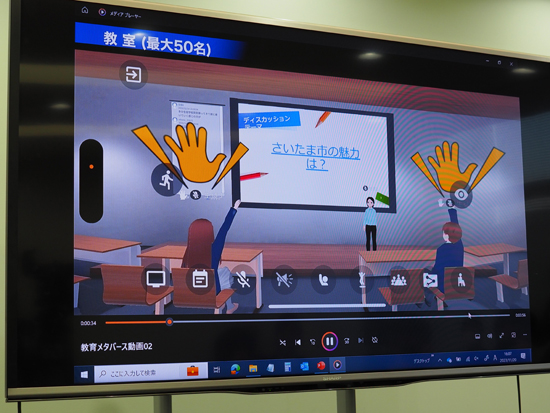Utilizing “3D Educational Metaverse” to support the learning of students who do not attend school NTT East Saitama and NTT Smart Connect

NTT East Saitama Branch and NTT Smart Connect are cooperating with Saitama City’s efforts to create ”new school building where students can learn with their peers” for students who do not attend school. Specifically, it will utilize ”3D Educational Metaverse” developed by NTT Smart Connect to support the learning of students who are not attending school. The program will run until the end of March next year.
According to the Ministry of Education, Culture, Sports, Science and Technology, the number of elementary, middle and high school students refusing to attend school has soared to approximately 300,000. There are 46,000 elementary and junior high school students who are not receiving counseling or guidance from specialized institutions inside or outside of school.
Under these circumstances, the Saitama City Board of Education opened ”Support Center for Children Who Do Not Go to School” (Growth) in April last year to support the social independence of students who do not attend school.
At Growth, they are promoting individual learning, including online classes using Teams and Zoom, but students who are not attending school are finding a place to belong and socialize online, and are learning from their peers.
On the other hand, issues with online classes have also become apparent.
Growth teacher Kyosuke Otaka said, ”Online classes tend to be one-way, and once the class is over, there is no interaction.At school, students would talk to each other or ask questions to the teacher during recess. We also interact outside of class. We believe the 3D Educational Metaverse will be effective in continuing to interact even after online classes have ended”.
3D Educational Metaverse implements spaces and functions specific to education. In addition to using avatars, you can also show your face. In addition to the ability to convert voice calls to text, it also provides text chat, hand raising, file sharing, browser sharing, and more.
Classrooms where students learn can be accessed by up to 50 people. The gathering space can be accessed by up to 120 people. An ID and password will be issued to each student, and a log of the students’ actions will be taken when they enter the Metaverse.
As of the end of October, there were 265 students who wanted to participate in the 3D Education Metaverse.
Teacher Otaka said, ”Growth’s goal is for students to become socially independent.Each student has their own challenges and strengths.It is important to increase the learning options that are suitable for each student”.
